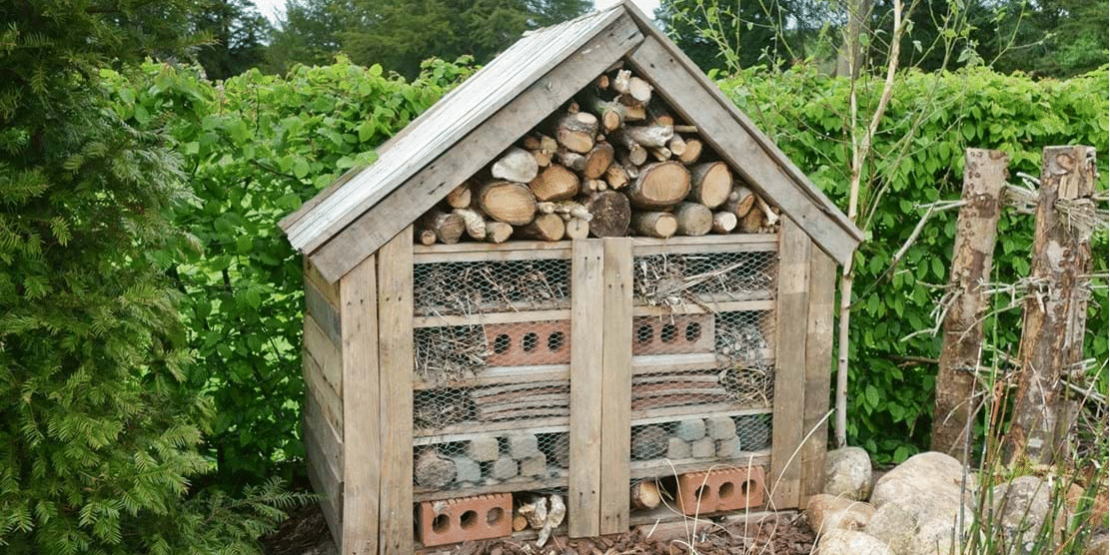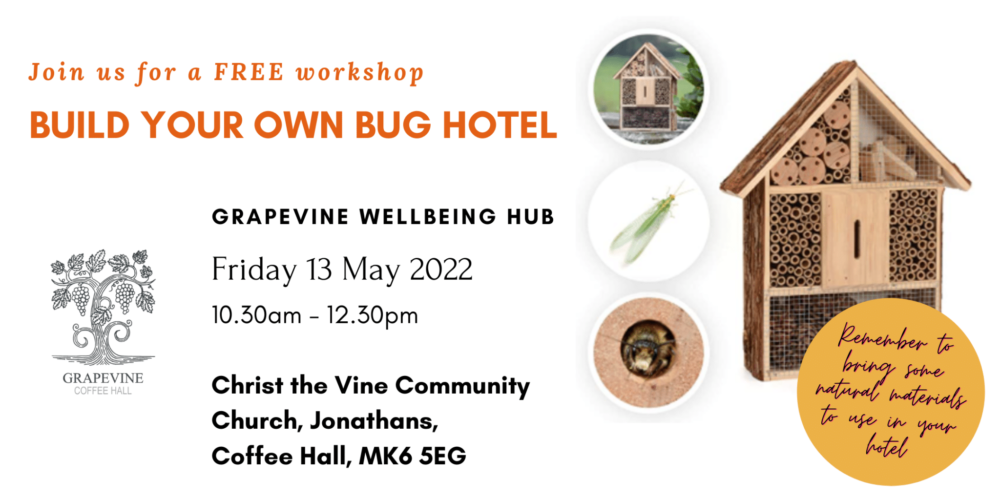In their natural habitat, insects hide away in nooks and crevices to hibernate safely through the winter and to avoid predators.
Holes in dead or rotting logs, hollows of plant stems, and safe spaces under rocks and fallen leaves are their typical habitats, but to help them out with more options, we can replicate some of these snug little hiding places by making a bug hotel for them.
Why make a bug hotel?
To put it bluntly, insects are one of the building blocks of life on earth and absolutely essential to our survival.
Not only are insects a crucial food source for other wildlife such as birds, hedgehogs, bats, and toads, but many insects pollinate our plants, which, has an enormous impact on helping us to keep the human food chain going.
The problem is that insects, or “bugs” as some people like to affectionately call them, are disappearing. They are being negatively impacted by our agricultural practices, overuse of pesticides, and global warming, which are effectively poisoning them and giving them fewer places to eat, breed, and hide.
Research reports indicate that insects are disappearing at a rate of 2.5% a year and that over the coming decades we could lose 40% of our bugs, which could be catastrophic for us and nature.
There are things we can do to help (- check out the Transition Town MK “nature” and “food” categories in their “Library of Ideas” for more on that). But making a bug hotel for your garden or allotment can be a good place to start.
The benefits of insect hotels
Encouraging biodiversity is good for the ecological balance in your garden or allotment, and giving insects a home can help your garden to prosper whilst also helping conservation of our vital wildlife.
Gardens can flourish from having insect hotels, as they can house pollinating bees, and attract ladybirds, wasps and lacewings, which are all natural predators to aphids and greenfly that are generally considered garden pests.
How a bug hotel works
Creating a bug hotel is all about providing hidey holes and safe accommodation for bees and insects to welcome them into your garden or allotment.
Different types of insects have different accommodation needs, so the best bug hotel is one that suits the insects you want to attract.
By using natural materials, you can replicate the natural environments insects look for. Here are some of the ideal nesting materials to keep your visiting insects nice and snug:
- Terracotta shards, slate, and stones create cool areas for beetles to hide.
- Bamboo canes and hollow plant stalks like teasel and sunflower stems are loved by solitary bees to lay their eggs.
- Logs and dead wood are loved by woodlice, millipedes, and feeding beetle larvae.
- Dry nesting conditions like fir cones, dry leaves, straw, twigs, and hay create loose burrowing conditions for all kinds of bugs including ladybirds, bees, spiders and lacewings.
Get creative
There are so many different types of bug hotel. They come in all shapes and sizes, and can shelter anything from hedgehogs and toads to solitary bees, ladybirds, bumblebees, beetles and woodlice.
It is worth considering the accommodation needs of the insects you’re trying to attract and make different bug hotels, or distinct zones, for each.
You can build your bug hotel at any time of year, but you’ll probably find that most natural materials like hollow plant stems, pine cones, straw and dry leaves are available in autumn, which is perfect timing to give your bugs a home to hibernate over winter.
Here are a couple of ideas:
These two DIY videos show you how to create impressive bug hotels of different sizes…
And here are a couple of dedicated bee homes you might like to try too…
Where to place your bug hotel
The best place to put an insect hotel is a sheltered, cool area, where it will get some morning sun and be protected from wind and rain.
It’s important to keep it out of reach of cats and dogs so securing it between 5 and 8 feet off the ground near an existing tree or hedge will keep both your pets and the insects safe.
Having a waterproof roof on your bug hotel is key to keeping your insects protected. As a failsafe, placing it under the roof of a garden shed should give it the protection from the rain it needs.
Try to choose a place that will be undisturbed for least a year, but the longer the better, as you should have resident insects hibernating in there when temperatures drop.
How to attract insects to your bug hotel
Using the right natural materials will mean that insects will eventually find their way to your bug hotel, but you can speed things up by doing these few simple things:
- Provide nectar – the food of life! Planting flowers and anything that blossoms will provide crucial food for bees and insects.
- Stop using pesticides. Chemicals will poison the natural environment and the insects you’re trying to attract! Insects like ladybirds, wasps and lacewings eat hundreds of aphids a day, so by attracting them you won’t need chemicals anyway!
- Give your garden wildlife a water source. Something as small as a saucer filled with pebbles and regularly topped up with water can be a lifesaver for all the nature in your garden all year around.
- Leave wild spaces. Letting areas of your garden grow wild will provide heavenly habitats for insects and nature. Dead wood and rotting leaves around your garden are greatly appreciated by beetles, worms, and wildlife like hedgehogs too.
Build your own bug hotel
Come along to our FREE workshop on Friday 13 May to discover how to make your own natural insect/ bug hotel.
Click the image below to learn more and or book your place here









